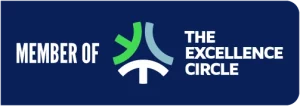EXCEPTIONALLY HIGH EXPECTATIONS ARE AWAITING COMPANIES AND THEIR MANAGERS OF TOMORROW.
“FLEXIBILITY AND HYBRID WORK WILL RULE THE CORPORATE WORLD IN THE NEXT DECADES.”
In connection with these high expectations, the following key questions arise urgently:
How can managers adapt to the new needs (flexibility in time, space, work and content) of employees? How do you get good staff in the war for talent and how do you keep the good talent?
How do you bridge the communication gap between on-site employees and remote team members?
How do you strengthen team cohesion and intrinsic motivation?
How do you reduce inefficiencies caused by more and more meetings? (→ lean operational processes, high-performing teams)
You must begin the future of work transformation NOW at your organization.
The type of moderation depends largely on the form of your meeting: a hybrid meeting must not just be a face-to-face meeting with an optional zoom link. Each meeting format requires a different approach. In order to decide which one you should choose, we suggest you choose a format based on the expected outcomes.
According to DGU, noise, poor image quality, and other technical glitches are the top causes of remote work frustration. Once you have decided on a format, it is important to optimize your technical setup.
54% of employees believe that their superiors need to moderate better. Therefore, after clarifying the format and technology, your mandatory exercise is to take your meeting preparation, moderation and follow-up to the next level.
Most presenters rely on their experience and stage presence for hybrid and long-distance formats. However, in order to moderate in a present and engaging manner in long-distance mode, a specific mindset is required.
Do not jeopardize the commitment of your colleagues with freestyle performances. Due to the lack of direct feedback in distance and hybrid meetings, you have to work this out every second.
Depending on the occasion and the number of participants, you work out this feedback asynchronously before the meeting, during the meeting in the form of live documents or precise questions.
- How to optimize your attention with remote and technology stewards, as well as all other important moderation techniques, can be found here:
In addition to the complete facilitation white paper, our checklist is a reliable helper before, during and after every meeting, regardless of the format.
Most workshops, training sessions and courses impart great knowledge – very few offer tools that have been tried and tested in practice and that keep your newly acquired knowledge compact for you.
Help yourself by leaving nothing to chance. Meetings in remote format and even more so in hybrid mode are extremely error-prone and require enormous concentration from you.
Regardless of the occasion and the number of participants, our small assistant in the form of a checklist will help you to think about the most important points before each meeting.
What the most important points are and the order in which you should consider them can be found here in our practice-optimized list to tick off:
MORE LINKS TO OFFERS
THIS MAY INTEREST YOU TOO


AGILE PROJECT-MANAGEMENT
Agile project management focuses on the iterative approach and maximizing the value of the resources used. LEARN MOREPRINCE2® – 2017 EDITION FOUNDATION
Professional qualification for classic project management. LEARN MOREKANBAN –HOW TO BETTER MANAGE DAILY BUSINESS AND PROJECTS
Control capacities and resources using the pull principle and optimize work processes. LEARN MORE


